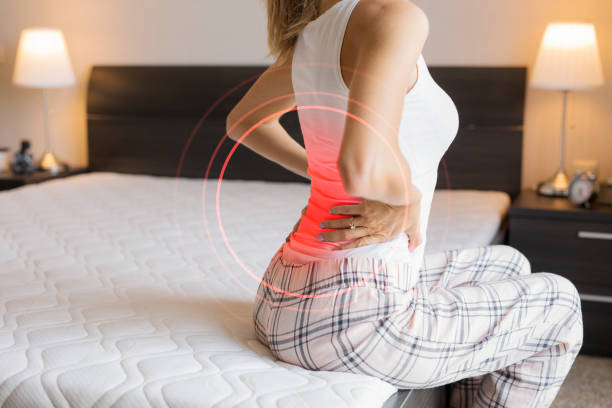By- Dr. Akhilesh Yadav, Associate Director – Orthopaedics & Joint Replacement, Max Hospital, Vaishali
Osteoporosis is a silent disease that weakens bones, making them fragile and more likely to break. It is particularly common in women, especially postmenopausal women, due to hormonal changes that accelerate bone loss. While osteoporosis can be debilitating, early intervention, a healthy lifestyle, and proper treatment can significantly reduce the risk of fractures and improve bone health.
Why Are Women More Prone to Osteoporosis?
Women are more prone to osteoporosis by nature because of the interacting biological, hormonal, and lifestyle elements. Women have a lower bone density earlier in life compared to men and hence are more susceptible to subsequent bone loss. The most critical determinant of osteoporosis among women is hormonal, specifically the loss of estrogen levels after menopause. Estrogen is very important in preserving bone strength, and its abrupt decline causes the accelerated resorption of bones, making bones weaker.
In addition to hormonal fluctuations, a lack of good nutrition also raises the risk. Most women are not getting enough calcium and vitamin D, both critical for bone health. Calcium is bone’s main building block, and vitamin D enables the body to absorb and make use of calcium. A lack of these nutrients, coupled with a diet that does not include dairy foods, leafy vegetables, and fortified items, contributes to weakening bones. A sedentary life is also a causative factor in osteoporosis, as bones require repetitive weight-bearing exercises like walking, running, or strengthening exercises to stay healthy. Genetic susceptibility is also a factor, with women having a family history of osteoporosis at a higher risk of developing osteoporosis. Certain diseases like thyroid disease, rheumatoid arthritis, and prolonged intake of corticosteroid medications can increase the risk of bone loss.

Signs & Symptoms of Osteoporosis
Osteoporosis can be called a “silent disease” since it develops without causing any symptoms until a fracture results. There are, however, subtle warning signals that can alert one to dwindling bone mass. Women whose height decreases by inches over several years, with persistent pain in the back or a change in posture that contributes to a slouching hunchback must look at these as potential symptoms of osteoporosis. Fractures of the spine, also without an obvious fall, might result in lifelong pain and disability.
Another important symptom is a greater tendency to develop fractures from minor falls or everyday activity. For instance, a seemingly simple action like bending to pick up an object or sneezing hard occasionally may lead to a bone fracture in osteoporotic patients. Weak grip force is also found to be correlated with reduced bone density and elevated fracture risk. Because osteoporosis forms surreptitiously, it is important to have regular medical examinations and bone density measurements to diagnose it early before extensive damage takes place.
Prevention of Osteoporosis in Women
Though osteoporosis cannot always be prevented completely, a healthy lifestyle can go a long way to minimize the risk. Diet has an important part to play in keeping bones healthy. Women should have a healthy intake of calcium in the form of dairy, green leafy vegetables, nuts, and foods that are calcium-fortified. Prior to menopause, the daily allowance of calcium should be about 1,000 mg, with an increase to 1,200 mg following menopause. Aside from calcium, vitamin D is also a necessary nutrient for bones. Sunlight is the optimal natural source of vitamin D, but supplements, egg yolks, and fatty fish also provide adequate amounts.
Regular physical exercise is another essential element in the prevention of osteoporosis. Brisk walking, jogging, and dancing are weight-bearing exercises that ensure bone density is maintained, while strength training exercises like weight lifting or resistance exercises make the bones and muscles stronger. Yoga is balance exercises that enhance stability and prevent falls, which may cause fractures in women with fragile bones. It is also significant to have a healthy body weight since being underweight can make bones weaker and more prone to fractures.
Smoking and heavy drinking are also important to avoid. Smoking hinders the body’s ability to take up calcium and compromises bones, and heavy drinking can interfere with bone formation and cause fractures. Hormonal imbalance should also be checked, particularly for women who have premature menopause or irregular periods, since these conditions may also increase the risk of osteoporosis.

Treatment of Osteoporosis
After a diagnosis, the main aim of treatment is to reduce bone loss, increase bone strength, and avoid fractures. Physicians usually prescribe drugs based on bone density tests and fracture risk evaluation. Bisphosphonates are the most frequently used medications that retard bone loss and decrease the risk of fractures. In women who have reached menopause, hormone therapy can be used to maintain bone density, though the decision to use it is based on one’s health risk. Selective estrogen receptor modulators (SERMs) like raloxifene act similarly to estrogen’s protective effect on bones without influencing other tissues. In the case of advanced osteoporosis, newer drugs like denosumab and teriparatide are given to stimulate bone growth and fortify bones.

Lifestyle changes continue to be needed despite medication. A balanced diet with high content of calcium and vitamin D along with regular physical exercise increases the efficacy of the treatment of osteoporosis as well as prevents overall bone fragility. Medical check-ups every now and then should also be scheduled by women to check bone density and analyze any additional fracture risk.
Osteoporosis is a life-threatening yet not so commonly realized disease that happens to millions of women all over the globe. Because it takes place in secret, women in most cases don’t know their bones are weakening until they fracture. That makes it imperative to take active measures to keep the bones healthy. A proper diet, weight-bearing activities, and changes in lifestyle can come a long way in minimizing the threat of osteoporosis. Early identification using bone density tests and routine medical check-ups can assist in detecting the condition before causing extensive damage.
By keeping the health of the bones first and making deliberate life choices, women can avoid developing osteoporosis or delay the onset of its development, paving the way to an active, independent life right into old age. Taking incremental but important measures today will construct a firmer foundation for tomorrow, enabling women to retain their mobility and forego the morbidities brought about by brittle bones.


0 Comments